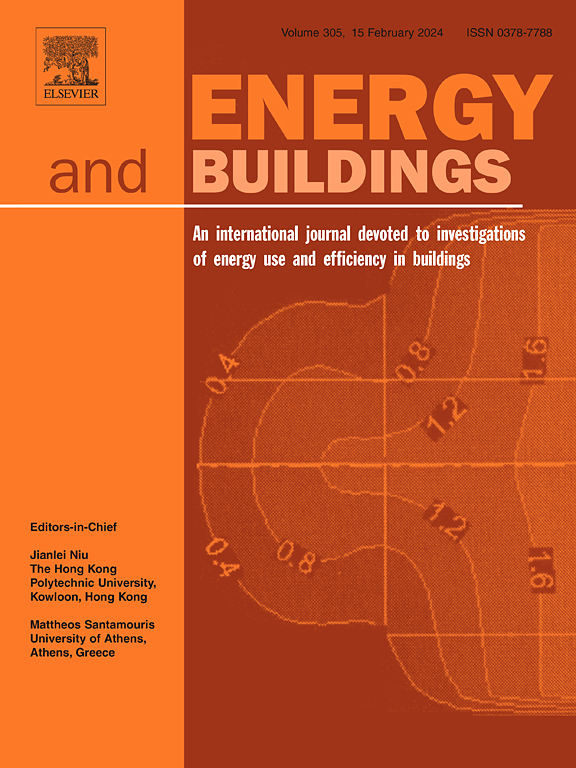光伏与重力储能混合集成,用于智能家居的并网管理
IF 6.6
2区 工程技术
Q1 CONSTRUCTION & BUILDING TECHNOLOGY
引用次数: 0
摘要
本文介绍了一种动态智能家居能源管理系统(SHEMS),该系统集成了混合光伏(PV)和重力储能(GES)系统,旨在最大限度地减少对环境的影响和家庭能源消耗。新型 SHEMS 具有一周动态预测模型,可适应可变电价、智能家电计划、太阳能输出和储能状态。这些结果表明,该系统不仅降低了家庭能源使用量,还大幅减少了电费支出,每天可自主供电长达 8.5 小时。通过利用来自黑暗天空应用程序接口(Dark Sky API)的云层和温度实时数据,该模型可以准确预测太阳辐射和光伏发电量,使其与电网和居民需求保持一致。预测精度采用均方根误差(RMSE)和平均绝对百分比误差(MAPE)进行评估,从最初的均方根误差(RMSE)22.46% 和平均绝对百分比误差(MAPE)11.78% 分别提高到 12.55% 和 4.91%。这些进步增强了电网的稳定性,优化了高峰期的能源存储,减少了对化石燃料的依赖。创新的可再生能源技术与复杂的预测建模相结合,大大提高了系统的效率,促进了能源的可持续利用,实现了环境和经济目标。本文章由计算机程序翻译,如有差异,请以英文原文为准。
Hybrid photovoltaic and gravity energy storage integration for smart homes with grid-connected management
This paper introduces a dynamic Smart Home Energy Management System (SHEMS) integrating a hybrid photovoltaic (PV) and gravity energy storage (GES) system aimed at minimizing environmental impacts and household energy consumption. The novel SHEMS features a one-week dynamic forecasting model that adapts to variable electricity prices, smart appliance schedules, solar output, and energy storage states. These results demonstrate that the system not only reduces household energy usage but also cuts electricity bills significantly, supplying power autonomously for up to 8.5 hours daily. By leveraging real-time data from the Dark Sky API on cloud cover and temperature, this model accurately predicts solar radiation and PV generation, aligning it with both grid and residential demands. The forecasting accuracy was assessed using Root Mean Square Error (RMSE) and Mean Absolute Percentage Error (MAPE), which improved to 12.55% and 4.91% respectively, from initial values of 22.46% for RMSE and 11.78% for MAPE. These advancements enhance grid stability and optimize energy storage during peak periods, reducing dependence on fossil fuels. The integration of innovative renewable energy technologies and sophisticated forecast modeling significantly boosts the system's efficiency, promoting the sustainable use of energy resources in line with environmental and economic goals.
求助全文
通过发布文献求助,成功后即可免费获取论文全文。
去求助
来源期刊

Energy and Buildings
工程技术-工程:土木
CiteScore
12.70
自引率
11.90%
发文量
863
审稿时长
38 days
期刊介绍:
An international journal devoted to investigations of energy use and efficiency in buildings
Energy and Buildings is an international journal publishing articles with explicit links to energy use in buildings. The aim is to present new research results, and new proven practice aimed at reducing the energy needs of a building and improving indoor environment quality.
 求助内容:
求助内容: 应助结果提醒方式:
应助结果提醒方式:


